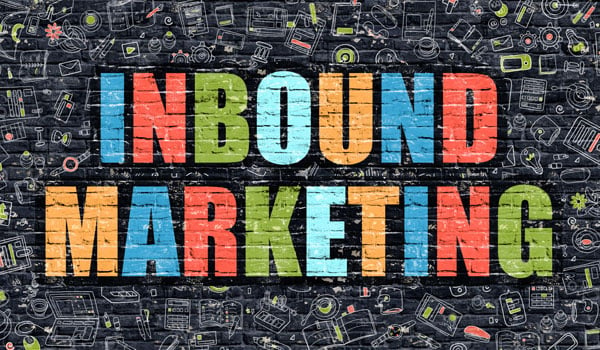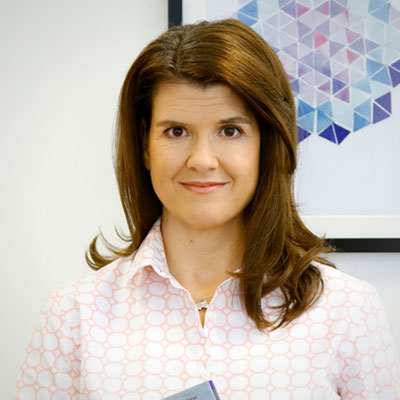Inbound marketing brings together all the sub-disciplines of modern digital marketing, such as content marketing, SEO, blogging, online marketing, and social media. What began as a term coined by software maker HubSpot has now become a global movement of forward-thinking marketing and sales experts.
Today, almost all leading figures in digital marketing are fans of inbound marketing, including MOZ founder and SEO guru Rand Fishkin, as well as international marketing authors such as Ann Handley, David Meerman Scott, and Seth Godin
Inbound Marketing – From Insider Tip to Mainstream Marketing
It has gradually become clear that inbound thinking represents nothing less than a fundamental shift from the push marketing of the 20th-century advertising world to social selling in the social media and internet age of today.
Another driver of the rise of inbound marketing is the corresponding software behind it. Inbound marketing software and marketing automation tools from companies like HubSpot, Adobe (Marketo), Oracle, or IBM offer, for the first time in marketing history, user-friendly software products that enable even smaller marketing teams to manage all tasks related to customer acquisition, lead generation, or customer care from a single dashboard. Fortunately, an increasing number of consumer goods and industrial companies are discovering the unbeatable advantages of inbound marketing.
5 Mega-Trends for Marketing & Sales
We see five major trends that will shape and dominate our marketing and sales business in the coming years.
Trend 1: Mobile Customer Engagement on the Rise
In recent years, social media and mobile communication through smartphones have become the primary communication channels for our customers. However, many companies have still not fully adapted to this shift.
It is frequently observed that mobile communication remains a challenge for many businesses. The past years have been predominantly focused on website-related marketing tools such as blogging, SEO, and lead conversion. These tools continue to be important and remain a staple in the marketing portfolios of all companies.
However, content marketing and attracting new potential customers increasingly occur on social channels where our potential customers spend more time—almost exclusively using mobile devices. Traditional communication channels like television and magazines are definitely out—at least for companies not selling classic, fast-moving consumer goods.
At the same time, B2B companies benefit from the rise of mobile marketing, gaining more direct customer access pathways that did not exist a few years ago. This makes B2B marketing a true innovation driver in international marketing. Never before has it been so easy and effective to make capital goods attractive to new customers worldwide. With modern B2B inbound marketing, even small companies can cost-effectively generate new customer contacts and build relationships across all internet channels.
Trend 2: B2B-Marketing goes Inbound
Inbound Marketing plays a crucial role in modern B2B marketing. Leading global B2B companies like Atlas Copco and General Electric exemplify this trend. Most B2B sales experts now believe that in the post-COVID era, no B2B company can solely rely on trade shows, magazine ads, and sales calls to expand its customer base. A modern B2B company must reach out to prospects online—where buyers gather information, exchange ideas with experts and colleagues, and seek new insights.
Thus, for many companies, pull marketing or inbound marketing is increasingly becoming a key success factor. B2B companies across various sectors, including machinery manufacturers, plant builders, health tech providers, pharmaceutical companies, and B2B e-commerce providers, are now successfully implementing this relatively new marketing approach.
Discussions with representatives from leading B2B companies have shown that American players have long moved beyond the initial phase of inbound marketing, having gained significant success and experience. These companies manage customer acquisition, customer support, and lead generation through websites, blogs, and social media with great expertise. Many US firms, supported by numerous local inbound marketing agencies, have already reached the professional stage of digital marketing.
As a result, the competence gap between American inbound-driven B2B companies and traditionally operating B2B companies has widened by another 2 to 3 years. The gap between a traditionally operating mid-sized company and an innovatively positioned inbound player in the B2B sector is now estimated to be around 5 to 7 years.
In the coming years, this could pose a significant competitive disadvantage for European mid-sized companies in accessing international markets. "Anyone in the B2B sector who still believes that the internet is not a sales channel is not yet in the 21st century," once remarked one of our B2B clients, a leading international marketing and sales expert. It couldn't be stated more dramatically and honestly. The notion that having a presence on social media and running a blog is sufficient does not align with the integrated and multichannel-oriented understanding of inbound marketing.
Trend 3: In the Inbound Age, It’s Not the Big, but the Agile Marketing and Sales Teams That Win
Manchmal hilft es Marketing-Teams geradezu, wenn sie bei der Einführung der Inbound-Methodik nicht auf etablierte Marketing-Prozesse Rücksicht nehmen müssen, sondern sich direkt von Anfang an dem modernen Digitalen Marketing widmen können.
Gerade das Festhalten an alten Software-Lösungen für einzelne Marketing-Elemente wie zum Beispiel E-Mail-Marketing oder Content-Marketing stellt für Unternehmen eine wichtige Innovationshürde dar. Viele erfahrene Marketing-Profis sind noch unsicher, wie sie und ihre Teams den ansteigenden Trainingsbedarf und Knowhow-Transfer schaffen sollen. Allgemein stellt sich die Erkenntnis ein, dass der Übergang zum integrierten digitalen Marketing nur zu schaffen ist, wenn man einen spezialisierten und erfahrenen externen Consultant als Trainingspartner einschaltet und ihn für die erste Zeit sogar mit ins Team integriert.
Die gute Nachricht: wir kennen durchaus Erfolgsbeispiele von ehemals traditionell ausgerichteten B2B-Unternehmen, die mit externer Unterstützung wie z.B. von Thought Leader Systems schnell den Schritt ins 21. Marketing-Jahrhundert gemacht haben. Gerade diese Unternehmen sind begeistert von den schnellen Erfolgen und nachhaltigen Wettbewerbsvorteilen, die sich durch den Übergang zum digitalen Inbound Marketing realisieren lassen.
Trend 4: Digital Customer Engagement Goes Holistic
In the B2B sector, the boundaries between personal and professional information behavior are increasingly blurring. This trend has been accelerated by companies like Google and Facebook. Particularly in the B2B sector, Facebook is making significant strides. Through its social advertising formats, Facebook offers small and medium-sized enterprises the opportunity to reach new potential customers exactly where they spend most of their time: on their preferred social platform, where they maintain both personal and professional connections. Facebook is thus catching up with purely business platforms like LinkedIn and Xing.
Facebook is profoundly changing our communication with B2B customers and accelerating the importance of Agile Marketing. With its informal approach and "Always On" behavior, especially among younger customers, Facebook offers a much more casual mode of communication compared to what LinkedIn and Xing currently allow in the business sector. This lowers the barrier to entry for engaging in Inbound dialogue.
However, it's not just Facebook that's altering customer communication. Google is also adapting to the changed communication behaviors of people. The traditionally keyword-focused search approach is dissolving in the mobile era. People now interact with search engines through their smartphone’s dictation function and mobile assistants like Siri in a much more natural and contextually relevant manner. This poses a challenge for marketers: they must now aim to be recognized not just for individual keywords on Google but to establish thought leadership on entire topics.
Marketing automation providers like HubSpot have recognized this challenge and now offer new content strategy tools within their software, enabling comprehensive content marketing campaigns for entire thematic areas. This marketing trend further diminishes the role of traditional and one-dimensional SEO experts. It's no longer sufficient for companies to merely have a competent “SEO team”; instead, the entire marketing team needs to become SEO and content experts for the key thematic areas of their customers. Content and SEO are increasingly becoming cross-functional competencies within the entire team.
This shift will have significant implications for processes and organization within many marketing departments. Many companies are actively engaging with agile marketing and agile process and project management for their marketing and sales departments.
Trend 5: Traditional Outbound Marketing and Innovative Inbound Marketing are Merging
From one-sided inbound marketing agencies, you often hear that traditional outbound marketing, including advertising, direct marketing, and email marketing, is dead. This is not the case. The artificial separation between these two marketing approaches that has been favored in recent years is dissolving. Both areas are converging.
The art of intelligent digital marketing lies in enhancing and supporting the new customer dialogue options of inbound marketing on social media and your own website with targeted outbound-oriented advertising measures. The goal of integrating outbound and inbound marketing is to give your content offerings access to many more potential customers than inbound marketing alone, such as blogging and social media marketing, could achieve.
Outbound marketing campaigns like Google Ads, Facebook Ads, or advertising on LinkedIn become amplifiers for inbound measures. A well-crafted social media post is significantly amplified by corresponding advertising expenditures on social media. Helpful informational offerings on your own website are made accessible to even more potentially interested people through Google AdWords advertising.
Digital marketing is becoming an increasingly refined management of the impact of owned media and earned media, and its enhancement through paid content impact boosters such as social advertising and search engine advertising. Inbound marketing thus becomes the catalyst for the entire online marketing of the future.
This increases the pressure on companies to finally address this topic. A British marketing expert and partner at Thought Leader Systems put it this way: “The early days of inbound are over. Inbound has gone from a differentiating factor to an absolute necessity. Those who do not make the leap in the next 2-3 years will incur an irreparable competitive disadvantage.”
Indeed, for all marketing areas in B2B and B2C alike: the more you invest in the presence and authority of your web presence and expand your visibility and thought leadership on social media, the higher you set the entry barriers for potential competitors who want to communicate with the same target audience. In the internet age, one thinks in months and quarters rather than years.
Trend 6: From Content Marketing to Thought Leadership Marketing
It is becoming increasingly difficult to specifically reach your target audience amidst the flood of content, let alone build new customer contacts. The competition for thought leadership in many areas is ruthless. Google complicates matters by prioritizing its own information over third-party content, making it more difficult and sometimes even impossible for companies to achieve organic ranking.
What is the consequence for all of us? The central challenge in the coming years will be not just to be the "best" content provider for your target audience but to become the "only" authority in their perception. Thought leadership will thus become the only option for many companies to achieve a prominent position with customers and prospects.
In the future, all inbound marketing tools will need to focus on making your content offering the only relevant information source for your customer base – especially bypassing Google and others.
Today's marketing mindset in campaigns and individual touchpoints, such as classic email marketing, is on the decline. Marketing will increasingly be measured by how well it maintains an ongoing dialogue and constant bilateral contact with individual, named prospects. Lead nurturing will become personal customer contact.
What does this mean for your marketing and corporate communication? Thought leadership will no longer represent a kind of PR supremacy over an anonymous and unknown public. In the future, marketing and PR will make your brand a personal authority for each potential customer. Inbound marketing will play a leading role, as the right software enables cross-channel and real-time personal dialogue with your numerous customers.


